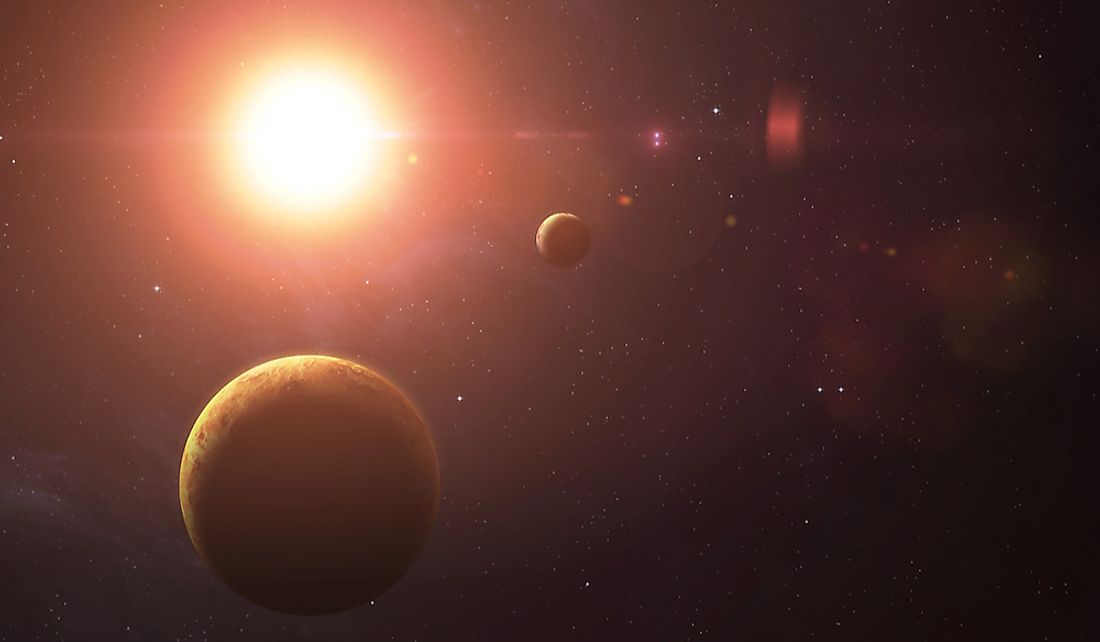Which Two Planets Do Not Have Any Natural Satellites?

Also known as a moon, a natural satellite is an astronomical object that orbits another celestial body such as a planet. In total, there are more than 190 known natural satellites. Of the eight planets in the solar system, six of them have natural satellites while two of them do not. These two planets are Mercury and Venus, which, incidentally, are the two planets closest to the sun. Outside of the eight planets, there are some dwarf planets, such as Pluto and Eris, that also have natural satellites.
Mercury and Venus
Mercury is the first planet from the sun in the solar system as well as the smallest planet among the eight planets. Named after the Roman god Mercury, the planet also has the shortest orbital period around the sun due to its closeness to the sun. As stated earlier, the planet does not have any known natural satellites due to a number of reasons.
Just like Mercury, Venus also does not have any known natural satellites. Venus is the second innermost planet from the sun in the solar system. The planet has an orbital period of about 243 days although its orbital direction is unlike most of the other planets. In order to understand why the two do not have any natural satellite, it is crucial to have an understanding of how natural satellites are formed and why it is impossible for them to have any.
How Are Natural Satellites Formed?
After decades of study, experts have established that there are three ways in which a planet can get a natural satellite. The first way occurs when there is a disk of material moving around or orbiting the planet in question. When this happens, the celestial material eventually coalesces into a larger body, which may or may not become spherical. The size of the coalesced body determines if it will become spherical. This process is widely attributed to be responsible for the formation of moons on four planets namely Saturn, Jupiter, Neptune, and Uranus.
The second way involves acquiring a natural satellite from another astronomical body. Usually, a larger planet is the one that acquires the satellite from another body through superior gravitational pull. This process is believed to be responsible for Phobos and Deimos, which are both natural satellites of Mars. Some small and irregular moons of Jupiter, Uranus, Saturn, and Neptune were also acquired in this manner. Triton, which is the biggest natural satellite of Neptune, was also acquired through the immense gravitational pull of the planet after Triton was released from the Kuiper Belt.
Lastly, collisions between two planets can cause the ejection of materials, which coalesce to form natural satellites. The moon of the earth is believed to have formed this way.
The Case of Mercury and Venus
From the above reasons, it is clear that the second reason is most likely why the two planets do not have a natural satellite. Simply put, the gravitational pull of the sun would tug at any moon that Mercury or Venus may have. Venus once had a moon although the planet endured a massive collision once that crashed the moon with the planet and merged the two.











